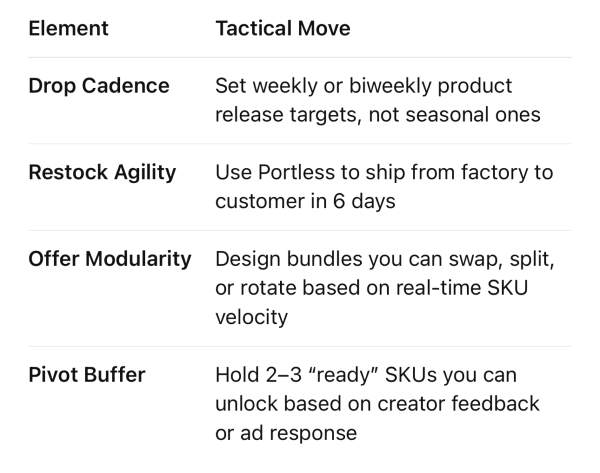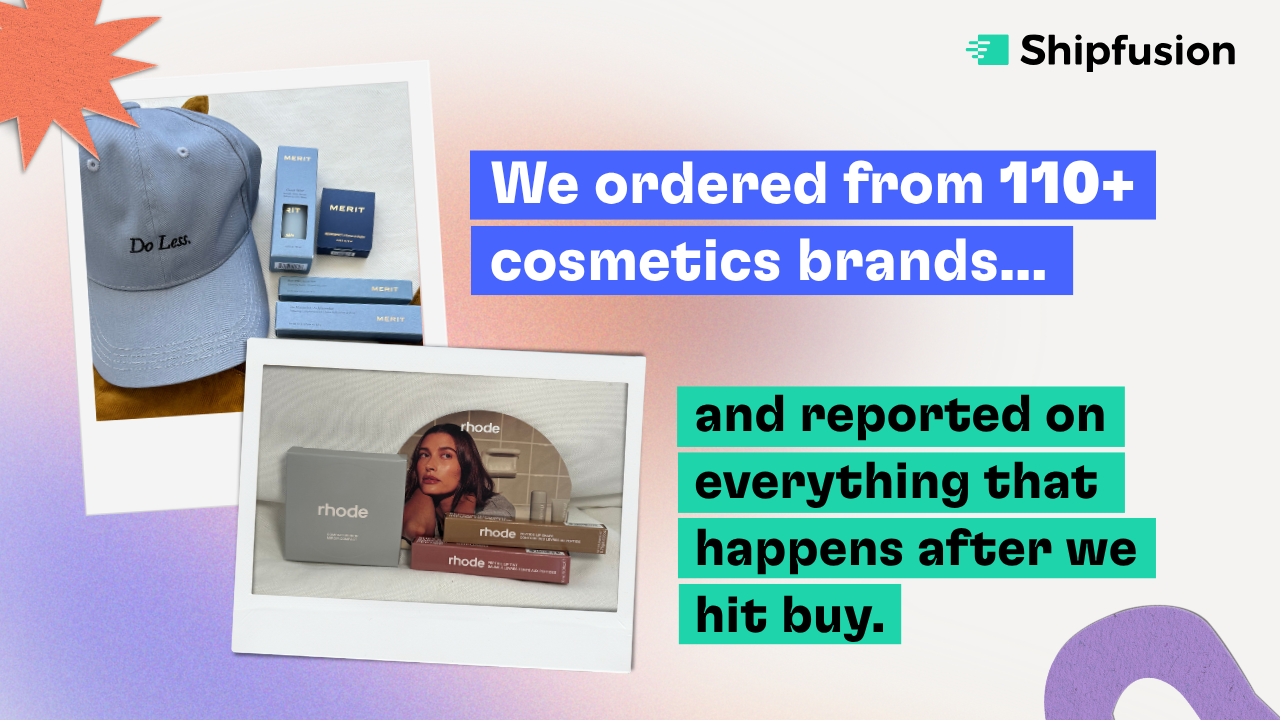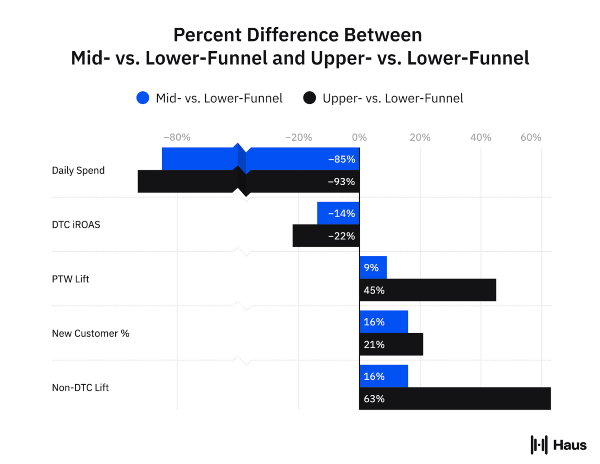The Real Cost of Slow Restocks
💸 Every week late burns $80K+ upside, Meta Ads in the Age of Automation, and more!

Hey there Smarty 👋
Are you geared up to catch the latest and greatest in quick shorts?
And just a quick heads-up! If you stumbled upon us through a friend, make sure to subscribe here! That way, you’ll never miss out on the trending shorts.

💸 The Real Cost of Slow Restocks
TikTok moves in hours. Your content pipeline moves in days. But your product drops? Still trapped in quarterly freight cycles.
That disconnect is costing you: Cultural timing, Paid ad compounding, Creator trust, And fast LTV lift from repeat buyers
The smartest brands in Q4 2025 are treating product drops like content drops, fast, paced, flexible, and ready to iterate.
Creative Speed + Inventory Lag = Burnout Without Scale
Here’s the brutal timeline most brands are on:
- You drop a new SKU
- You seed it to creators, launch ads, push organic
- One angle hits hard, 2.5x ROAS on Week 1
- But you didn’t plan a restock until December
- Now you’re sold out, and your momentum is dead
That’s not a creative problem. It’s a supply-side misalignment.
Introducing the D.R.O.P. Execution Framework
D.R.O.P. = Drop Cadence × Restock Agility × Offer Modularity × Pivot Buffer
This isn’t just strategy, it’s planning logic:

This framework lets you launch small, learn fast, and scale only what actually hits.
The Financial Cost of Slow Drops
Let’s say you sell a $50 AOV product with a 40% margin.
You plan 3 drops for Q4, spaced one month apart. Only the first drop hits. But your freight timeline is 60+ days.
Result?
- You’re stuck with dead inventory from Drop 2
- Drop 1 sells out but you miss 2 weeks of high-ROAS traffic
- Drop 3 arrives post-holiday
Total missed upside? Conservatively $80–150K. All because you couldn’t move at content speed.
Portless solves this by enabling real-time drop execution:
- Weekly product flows
- SKU-specific fulfillment
- Zero warehouse delays
- Pay tariffs after sale, not upfront
You can get a custom quote for your brand here, and launch your next 3 product drops like content drops, fast, reactive, and fully compounding.
Final Thought
Most DTC teams today plan product like finance, launch like performance, and fulfill like 2018.
But the brands breaking out in Q4 are doing it differently.
They’re:
- Shipping what hits
- Killing what doesn’t
- And treating products like cultural assets, not static inventory
If your product can’t ride the algorithm in real-time, it doesn’t matter how good the content is.

Together with Shipfusion
The $8,000 Report Every Brand Should Read

Shipfusion spent $8,000 in ordering from 110+ cosmetics brands. What we uncovered goes beyond beauty. If you ship to customers, these insights are for you.
👀 75% failed to use post-purchase upsells to grow AOV.
🌀 33% of orders arrived scuffed, with 10%+ damaged.
📦 Half shipped in custom boxes, but only 36% branded interiors.
The data shows one thing clearly: most brands are losing money, trust, and retention where it matters most after checkout. And customers don’t forgive sloppy fulfillment, no matter how good your product is.
This is the reality: delivery is part of the brand experience. If you don’t control it, you’re leaving money and loyalty on the table. And in peak seasons like BFCM, the cost of failure multiplies.
Grab the Cosmetics Delivery Files to see what's working, what's missing, and how to win loyalty.

🚀 Meta Ads in the Age of Automation: 640 Tests Later
Haus analyzed 640 incrementality experiments across $14M+ average Meta ad spend, revealing how automation, funnel strategies, and attribution really perform. The findings show Meta remains highly incremental, but efficiency depends on campaign type and spend allocation.

The Breakdown:
1. Meta’s Incrementality is Clear - Meta ads drove an average +19% lift to core KPIs, with 96% of tests showing gains by midpoint. Post-treatment iROAS rose +26%, while 32% of Meta’s impact flowed to non-DTC sales. Out of Haus’s top 100 lift tests, 77 were from Meta, including a record +74% lift.
2. Advantage+ Delivers Speed, Manual Delivers Depth - Adopted by 93% of brands, Advantage+ accounts for 39% of spend. It identifies intent quickly, but in head-to-head tests, 58% of brands saw higher iROAS from Manual. On average, Advantage+ produced 12% lower iROAS and over-reported results by $12 per $100.
3. Mid- & Upper-Funnel Tactics Unlock Halo Gains - Mid-funnel optimization tests grew +121%, showing lower immediate iROAS (-14%) but stronger long-term lift (+9% PTW) and higher new-customer rates (78%). Upper-funnel campaigns remain underused (6% spend) but drove the highest omnichannel halo (+138%) and 81% new customers.
4. Incremental Attribution Could Be the Next Breakthrough - Meta’s new attribution setting aims to focus spend on ad-driven conversions. Early Haus results show just 43% success, but if improved, it could merge Advantage+’s speed with Manual’s stronger incrementality.
Meta is highly incremental, but efficiency depends on smarter optimization, not just proving lift. Omnichannel effects must be factored in since DTC efficiency alone misses the full picture. Mid- and upper-funnel campaigns should be layered in to keep pipelines healthy. And testing Incremental Attribution could unlock more accurate performance signals going forward.

🚀Quick Hits
🔍 Social media hype is noisy; Particl shows you the signal. Its Trends Tool uses real consumer data to spot which materials, aesthetics, and keywords are breaking out before they hit ad saturation. Trusted by 10,000+ brands, it helps you scale smarter. Start your free trial today.
🎥 CapCut is expanding with LinkedIn integration and new AI tools, including text-to-video, avatars, and multilingual translations, streamlining video creation while boosting reach across professional and global audiences.
📊 Google Ads has added new reporting for AI Max campaigns, introducing metrics for expanded keyword matches and landing page traffic. Advertisers now get clearer insights into how AI repurposes assets to drive incremental clicks.
⚡ Google’s Logan Kilpatrick hinted AI Mode may soon be Google Search’s default, but VP Robby Stein downplayed it, saying focus is on easier access, not replacing the classic search experience.
📊 45.5% of users say AI search tools deliver a better experience than Google, with 15.8% calling them “much better” and 29.7% “slightly better,” despite 69.6% still trusting Google most.

That’s a wrap for today! Tell us your thoughts about today's content as we line up more Shorts! And don’t hesitate to share this with someone who’d adore it. 🥰
